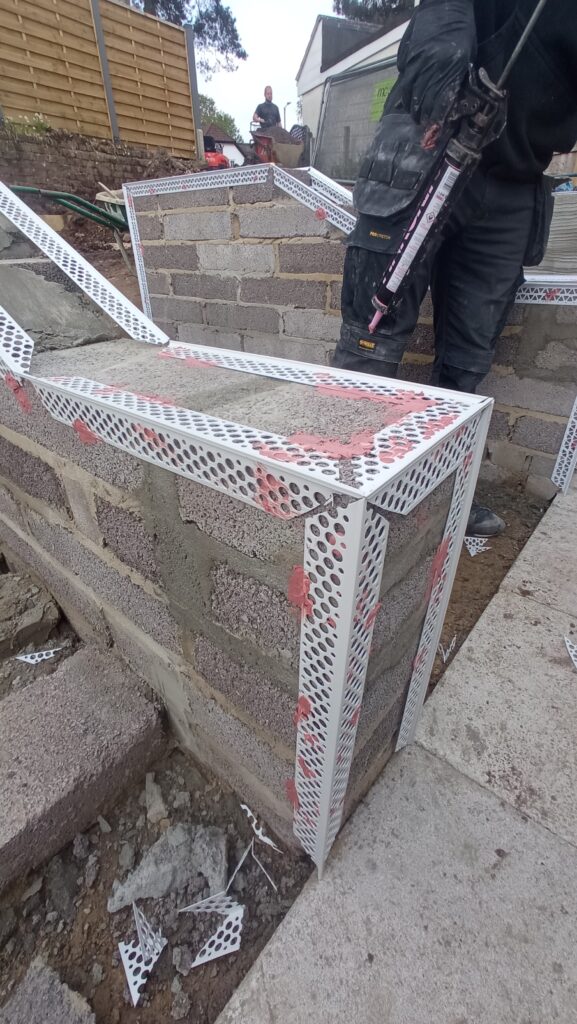When it comes to achieving a strong, neat, and long-lasting render finish, the choice of materials is critical. One item that has become essential in modern plastering and rendering is the plastic bead.
In this guide, we’ll explain exactly why plasterers use plastic beads when rendering, how they compare to traditional metal options, and the major benefits they offer in 2025 and beyond.
What Are Plastic Beads for Rendering?
Plastic beads for rendering are durable, flexible profiles made from PVC or similar plastics. They are installed at corners, edges, and joints to reinforce the render and create clean, professional lines.
Unlike older metal beads, plastic render beads are designed to withstand the elements, absorb impacts, and eliminate rusting issues.
7 Key Reasons Plasterers Choose Plastic Beads for Rendering
1. Corrosion-Free Durability
Traditional metal beads are prone to rust, especially if they get scratched or are used on exterior walls.
Plastic beads, on the other hand, are 100% corrosion-resistant. They perform exceptionally well even in harsh climates — rain, humidity, or coastal air — ensuring a stain-free, long-lasting render finish.
2. Flexibility and Crack Resistance
Buildings naturally expand and contract with temperature changes.
Plastic beads offer flexibility that allows them to move slightly with the wall, helping to prevent cracks in the render. This flexibility makes plastic render beads ideal for both residential and commercial projects.
3. Easy to Cut and Install
Another reason why plasterers use plastic beads is because they are extremely easy to cut.
Unlike metal beads that need snips or grinders, plastic beads can be trimmed with a fine-tooth saw or heavy-duty scissors. This speeds up installation, saves time, and reduces risk of injury on-site.
4. Lightweight and Cost-Effective
Plastic render beads are lighter than metal options, making transportation and handling easier.
They are also cost-effective in the long run, thanks to reduced maintenance, fewer callbacks, and minimal installation issues.
5. Superior Adhesion
Modern plastic plastering beads are manufactured with micro-perforations or textured surfaces.
This design allows the render or plaster to key into the bead securely, ensuring strong adhesion and a stable, professional finish every time.
6. Wide Range of Applications
Plastic beads are available in numerous profiles, including:
- External corner beads
- Stop beads
- Drip beads
- Movement joints
This versatility means they can be used for everything from fine internal plastering work to heavy-duty external rendering projects.
7. Eco-Friendly Options Available
Sustainability is increasingly important in construction.
Many manufacturers now offer recyclable plastic beads, making them a more environmentally friendly choice compared to traditional galvanized steel.
Plastic Beads vs Metal Beads: Which is Better for Rendering?
| Feature | Plastic Beads | Metal Beads |
|---|---|---|
| Rust Resistance | ✅ Corrosion-free | ❌ Can rust over time |
| Flexibility | ✅ High flexibility | ❌ Brittle under movement |
| Cutting and Handling | ✅ Easy and safe | ❌ Requires specialist tools |
| Cost Efficiency | ✅ Long-term savings | ❌ Potential maintenance costs |
| Eco-Friendliness | ✅ Recyclable options | ❌ Higher carbon footprint |
In 2025, plastic beads clearly outperform metal in most rendering applications.
Are Plastic Beads the Future of Rendering?
The answer is a resounding yes.
Plastic beads for rendering offer better durability, easier installation, improved performance, and long-term cost savings. Whether you are rendering a new build, repairing an old wall, or undertaking a commercial project, choosing plastic beads ensures a high-quality, professional finish — every time.
If you want render work that stands the test of time, plastic plastering beads should be your go-to material.
FAQs About Plastic Beads for Rendering
Q: Can you use plastic beads indoors and outdoors?
A: Yes! Plastic beads are ideal for both internal plastering and external rendering.
Q: Do plastic render beads crack or break?
A: Plastic beads are flexible and impact-resistant, meaning they are less likely to crack compared to metal beads.
Q: Are plastic beads more expensive than metal beads?
A: Initial costs are comparable, but plastic beads save money over time due to reduced maintenance and no rust issues.

